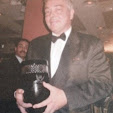III.3.
Grierson and Flaherty:
Nichols and other Anglophone cinema historians
generally attribute the first use of the term documentary to John Grierson, the Scot who created the famous
British Empire Marketing Board Film Unit; Grierson reportedly first used the
term to describe Robert Flaherty’s Moana (1926)
in a review written in The New York Sun:”
Of course, Moana, being a visual account
of events in the daily life of a Polynesian youth and his family, has
documentary value.”[1]
In
the Anglophone world, the evolution of documentary aesthetics began during the
Great Depression of the 1930’s, and the
British documentarians, led by Grierson,
soon began to express an ambivalence towards the work of the man they had
previously lionized as a pioneer only a few years before.
In
his book, “Documentary Film” (1935),
the first known history of documentary,
Grierson protégé Paul Rotha set
the tone when he accused Flaherty of having romanticized the lives of his
subjects:” Surely we have the right to
believe that the documentary method, the most virile of all kinds of film,
should not ignore the vital social issues of this year of grace.”[2]
Grierson
himself had initially hailed Flaherty as the father of documentary in the
1920’s, but, with the advent of the Great Depression in the 1930S, he and his
colleagues seemed to grow increasingly disenchanted with the Flaherty.
With
the advent of synchronized sound, Grierson and his colleagues developed their
own style of documentary; they began to rely heavily on the unseen omniscient narrator
– a technique Grierson called direct
address narration.
Since
Flaherty abhorred narration of any kind, this reliance on Direct Address led to even further creative schism. In 1934, Flaherty’s
“Man of Aran” won a first prize at
the Venice Film Festival, and was praised by many to be Flaherty’s finest work.
However, rather than acknowledge his colleague’s achievement, Grierson rather ungraciously
sniffed that he hoped that ‘the
neo-Rousseauianism implicit in Flaherty’s work dies with his own exceptional
self.”[3]
There
is little question today that John Grierson was the dominant figure in the
early development of the documentary in the Western world. His key positions as first head of the Empire
Marketing Board, and, later, as founder of the National Film Boards of Canada,
Australia and New Zealand, provided him with a platform to define documentary as he chose, at least in the
Anglophone world. [4]
This
ascendancy of the Griersonian aesthetic over Flaherty, not to mention Soviet documentary
pioneers such as Dziga Vertov and Esther Shub was due to several factors:
First,
and perhaps most important, Grierson held positions of power at the most
important government-supported institutions in the Anglophone cinema world in
the United Kingdom, Canada, and Australia during a period when film became the
dominant medium for mass culture. He was also instrumental in the establishment
of the Indian government’s Films Division, one of the world’s largest producers
of documentary films, as well as United Nations Television. In short, John
Grierson managed to create a global platform for his documentary aesthetic,
with no oversight from commercial sponsors, of whom there were none.
Indeed,
for many people around the world, a Grierson-formula film with the institutional,
direct address narration, became synonymous
with documentary.
The
Grierson influence is still noticeable today in former colonies of the United
Kingdom and France, such as India and most African countries. The direct
address narration assures institutional control of message, often attempting to
compensate for poor visual material, and makes life easier for government administrators,
enabling them to show their bosses they are parroting the party line, while
impeding the development of modern media communications skills among both practitioners
and consumers alike. Since many of these same administrators appear themselves to
have no awareness or comprehension of modern media techniques, this phenomenon
is self-perpetuating, resulting in the production of mediocre material , of
interest to few other than the VIPS depicted.
As
a result, today the Grierson direct address narration technique is often
referred to disparagingly among documentarians as The Voice of God; it is hard to assess the impact of this technique
when it was most prevalent, in the 1930’s and 1940’s, and was associated with
newsreels popular in England and the United States, like “The March of Time”. However, today, most contemporary
documentarians see it as patronizing and antiquated, and avoid it altogether,
if at all possible.
While
Flaherty enjoyed early commercial success, and had many admirers, he was never
able to articulate his own aesthetic and ideology in words; he let his films
speak for themselves. Flaherty died in 1951, and his widow Frances attempted to
protect his legacy through the creation of the Flaherty Seminars in 1955, which
were held yearly in upstate New York. However,
as more embarrassing facts surrounding the shooting of “Nanook of the North” became known, Flaherty’s stature as a
documentary pioneer became seriously tarnished.
Internationally, his reputation has yet to
recover from the withering ideological critiques during the post-Colonial era of
the 1960s, when his man-versus-nature theme was vigorously denounced as a “romantic fraud”[5]
by Third World critics and others. One
critic, Fatimah Tobing Rony, went so far as to describe Flaherty’s “Nanook of the North” as,” a cinema of romantic preservationism,
dedicated not to anthropological knowledge but to the production of indigenous
people as trophies and to the capture of their ways of life in nostalgic
fiction.”[6]
Today,
one might fairly say the ethnographic
documentary owes the biggest debt to the pioneering attempts of Flaherty to
document traditional lives of indigenous peoples. However, his well-established
penchant for re-enactment, not to mention outright fabrication of non-existent
events in the lives of the peoples whose stories he was supposedly documenting,
have caused him to be regarded as something less than a role model for aspiring
documentarians today.

No comments:
Post a Comment